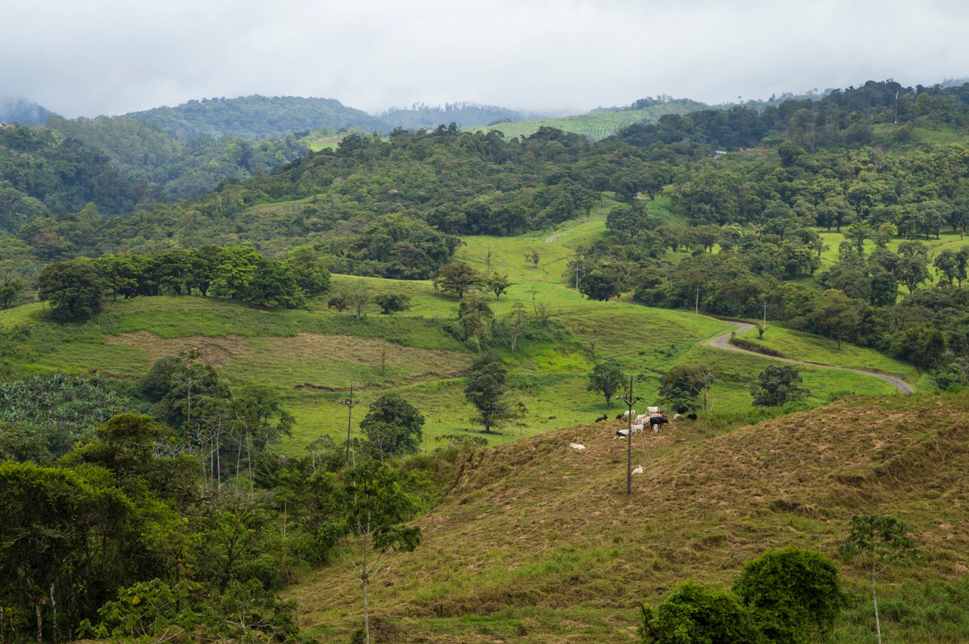December 15, 2023 – MARÍA ALEJANDRA VÉLEZ
BOGOTÁ – When Colombia’s first leftist government came to power in August 2022, many hoped that the country’s drug strategy would shift dramatically. President Gustavo Petro campaigned on a promise to move away from the eradication of coca, the main ingredient in cocaine, and in a speech to the United Nations General Assembly shortly after taking office, he called on Latin American countries to join forces against the “irrational war on drugs.”
According to the latest report from the UN Office on Drugs and Crime, the world is experiencing a prolonged surge in cocaine supply and demand, with an estimated 22 million consumers globally. As the largest producer, Colombia has a key role to play in shaping the future of this booming illicit industry.
But the country’s new ten-year drug strategy, launched in early October, is likely too timid for reform advocates. Despite calling for Colombia to lead an international discussion about the drug war’s failure, the strategy still operates within the prohibitionist framework. Importantly, it does not attempt to regulate the cocaine market, even though a pilot program could have enabled the country to experiment with legalization.
The strategy focuses on reducing coca cultivation, albeit not by forced eradication or by criminalizing growers. For example, the new policy does not consider aerial fumigation with glyphosate, a practice that was banned in 2015, but which former President Iván Duque Márquez attempted to revive in 2019. Instead, the government aims to create a rural development program that involves gradual crop substitution tied to public spending in coca-growing regions. By contrast, the largely unsuccessful crop-substitution program under the 2016 peace agreement with the Revolutionary Armed Forces of Colombia requires immediate eradication.
On the demand side, the government will continue to implement harm-reduction measures, with a special focus on vulnerable groups such as prison inmates.
Surprisingly, there is a new focus – perhaps influenced by policy in the United States – on preventing and reducing the negative consequences associated with illicit opioid use, even though it is not prevalent in the country. Crack addiction, especially among the homeless population, is more common, but it is not explicitly addressed.
That said, the strategy encompasses progressive elements that better address the needs of the rural communities most affected by the drug trade, a reflection of the inclusive consultation process with cocalero (coca growers) and cannabis farmers, as well as NGOs and academics. For example, it endorses the legalization of adult cannabis use. Designing a regulated market, however, requires the approval of Colombia’s Congress.
Most significantly, this new approach promotes the legalization of “non-psychoactive” uses of the coca leaf, which indigenous communities in the Amazon and Andes have long held as sacred. Recently, the Ministry of Justice published a draft bill to regulate the medical, scientific, industrial, and research uses of seeds, cultivation, and poppy, cannabis, and coca plantations. The market for alternative uses of coca is more established in Bolivia and Peru, owing to their much larger indigenous populations. But this only underscores the potential for pursuing regulation in Colombia. Moreover, the coca leaf could offer several nutritional, agricultural, and medical benefits, which is why the new policy also attempts to eliminate the barriers to conducting scientific research on the plant. Moreover, with 49% of coca plants located in strategic conservation areas, the new policy could contribute to environmental goals.
But implementing these reforms will not be easy. The new drug strategy lacks an action plan, a clear budget, and tools for monitoring and evaluating its progress. Moreover, its success depends on mobilizing large financial resources and improving coordination between public agencies – both of which have been considerable roadblocks in the past. And with no binding commitments, the policy could be reversed if a right-wing party takes power after the next election in 2026.
To institutionalize the strategy and advance its objectives, the Petro administration will need to secure the support of national legislators, as well as maintain strong relations with the US and Europe. Fortunately, Colombia’s new holistic approach largely aligns with the Biden administration’s anti-drug strategy and is thus unlikely to stoke bilateral tensions, especially because it contains anti-money-laundering measures and other punitive tools to combat organized crime. Equally important, Colombia must unite Latin American countries to address the structural challenges that fuel the region’s cocaine trade.
As the world’s most consequential cocaine producer, Colombia could make the case for global drug-policy reform. The country’s new approach, which focuses more on rural development than punitive measures, represents a step forward. But to have a greater impact, the government must follow through on its promises, especially to regulate the cannabis and coca-leaf markets. This will require political determination and unwavering dedication to ambitious reform.
María Alejandra Vélez is a professor in the Department of Economics at Universidad de Los Andes in Bogotá.
Previously published on Project Syndicate on December 20, 2023
Copyright: Project Syndicate, 2023.
www.project-syndicate.org
Cover designed by Freepik

0 Comments